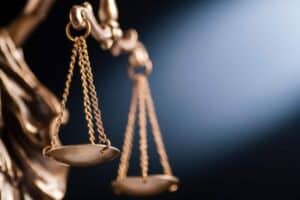Edward ordered the stone to be built into the Coronation Chair in London in 1296.

The Stone of Destiny, a sacred slab of sandstone that became a symbol of Scottish nationhood, has left Edinburgh Castle for London, where it will play a key role in King Charles III’s coronation.
It has not been taken out of Scotland since 1996 when it was officially returned following a 700-year absence.
The 152-kilogram (335-pound) stone, seized from the Scots by the king of England Edward I in 1296, is being taken to Westminster Abbey in London for the May 6 ceremony.
ALSO READ: King Charles’ coronation guest list revealed
Officials at Edinburgh Castle, where it is kept with the Scottish crown jewels, held a special ceremony to bid temporary farewell to the legendary stone that left for London late Thursday.
The Stone of Scone, as it is also known, was transported south from Edinburgh under tight security and will be placed beneath the Coronation Chair at the abbey for Charles’s enthronement.
Legend has it that the stone was brought from the Holy Land through Egypt, Sicily and Spain to Ireland before being placed in a monastery in Scone in Scotland in the 9th century.
It was then used for centuries in the inauguration of Scottish kings.
But David Breeze, a professor of history and archaeology from the University of Edinburgh, said it is highly likely that the stone originates from the ancient Pictish kingdom of Scotland.
ALSO SEE: Meghan Markle will not be attending King Charles’ coronation: Here’s why
“The origin of the stone has long been shrouded in myth,” he told Times Radio.
“The connection with the Middle East is strong and in the Middle Ages the idea that the stone had been Jacob’s pillow was used to justify territorial aggrandisement.”
– ‘Tremendous privilege’ –
Edward ordered the stone to be built into the Coronation Chair in London in 1296.
“Edward was making a statement about the status of Scotland,” said Ewen Cameron, a professor of Scottish history at the University of Edinburgh.
“One chronicler stated that its removal to London was ‘in recognition of a kingdom surrendered and conquered’.”
The stone remained in Westminster Abbey for most of the next 650 years, until Christmas Eve 1950 when a group of Scottish students took part in an audacious raid to retrieve it.
A manhunt was launched, with checkpoints set up at the Scottish border, but the students succeeded in smuggling the stone into Scotland.
ALSO READ: UK royals unveil emoji, procession details for King Charles’ coronation
The students later recounted that they had to secretly employ a stonemason to repair the 335-pound stone after they dropped it and broke it into two as they carried it to their car.
The stone was later found on the site of the High Altar at Arbroath Abbey where, in 1320, Scottish nationhood was declared under the leadership Robert the Bruce.
It was taken back to London in 1951 and returned to Westminster Abbey, where it was placed back in the throne before the coronation of Queen Elizabeth II in 1953.
Coronation of kings and queens
The stone was returned to Edinburgh in 1996 on condition that it only leave Scotland for the coronation of future kings and queens.
Kathy Richmond, head of collections and applied conservation at Historic Environment Scotland (HES) which looks after the stone, said they were working closely with the conservation team at Westminster Abbey on the installation of the stone.
ALSO READ: Royal news: Adele and Ed Sheeran snub King’s coronation
“It is a tremendous privilege for HES to play its part in such a significant and historic occasion,” she said.
“It is also a great responsibility to ensure the safe voyage and return of such an important national symbol,” she added.






